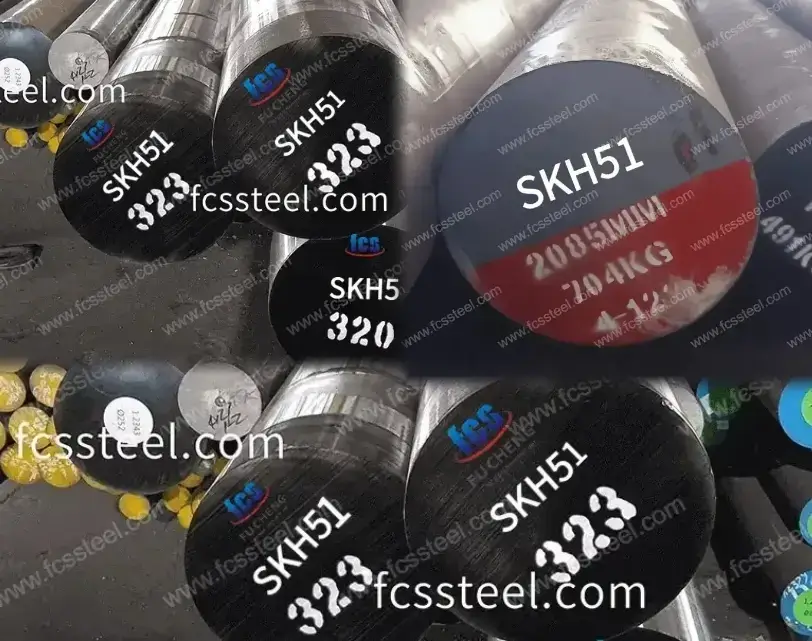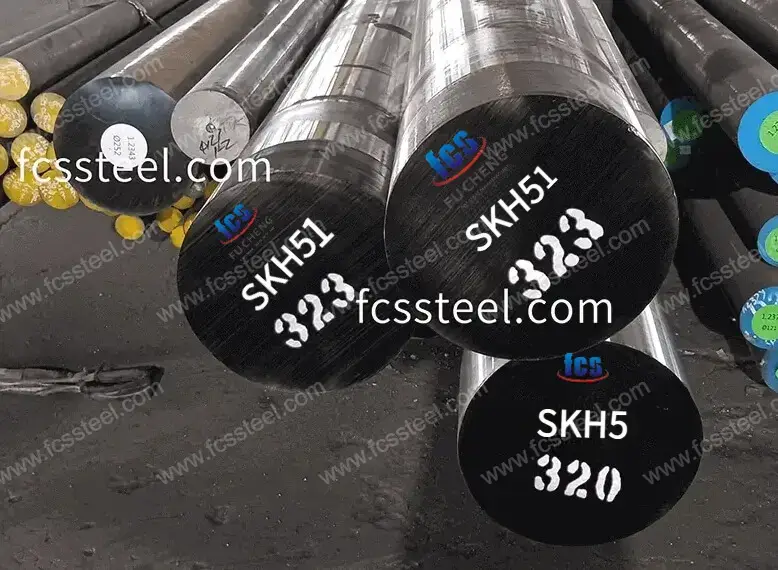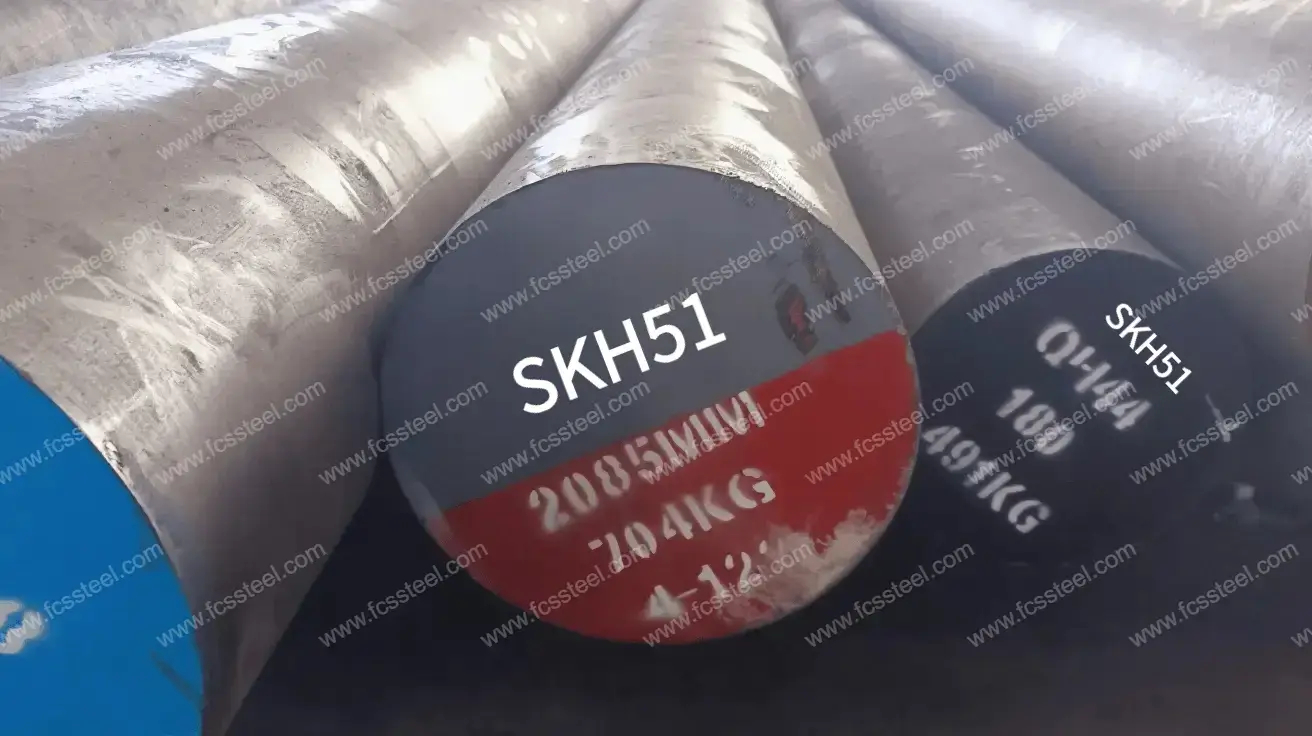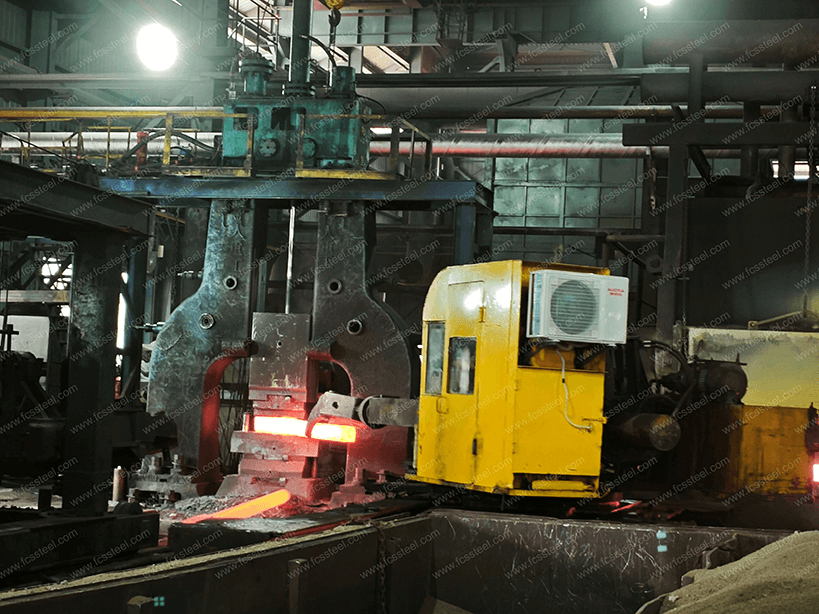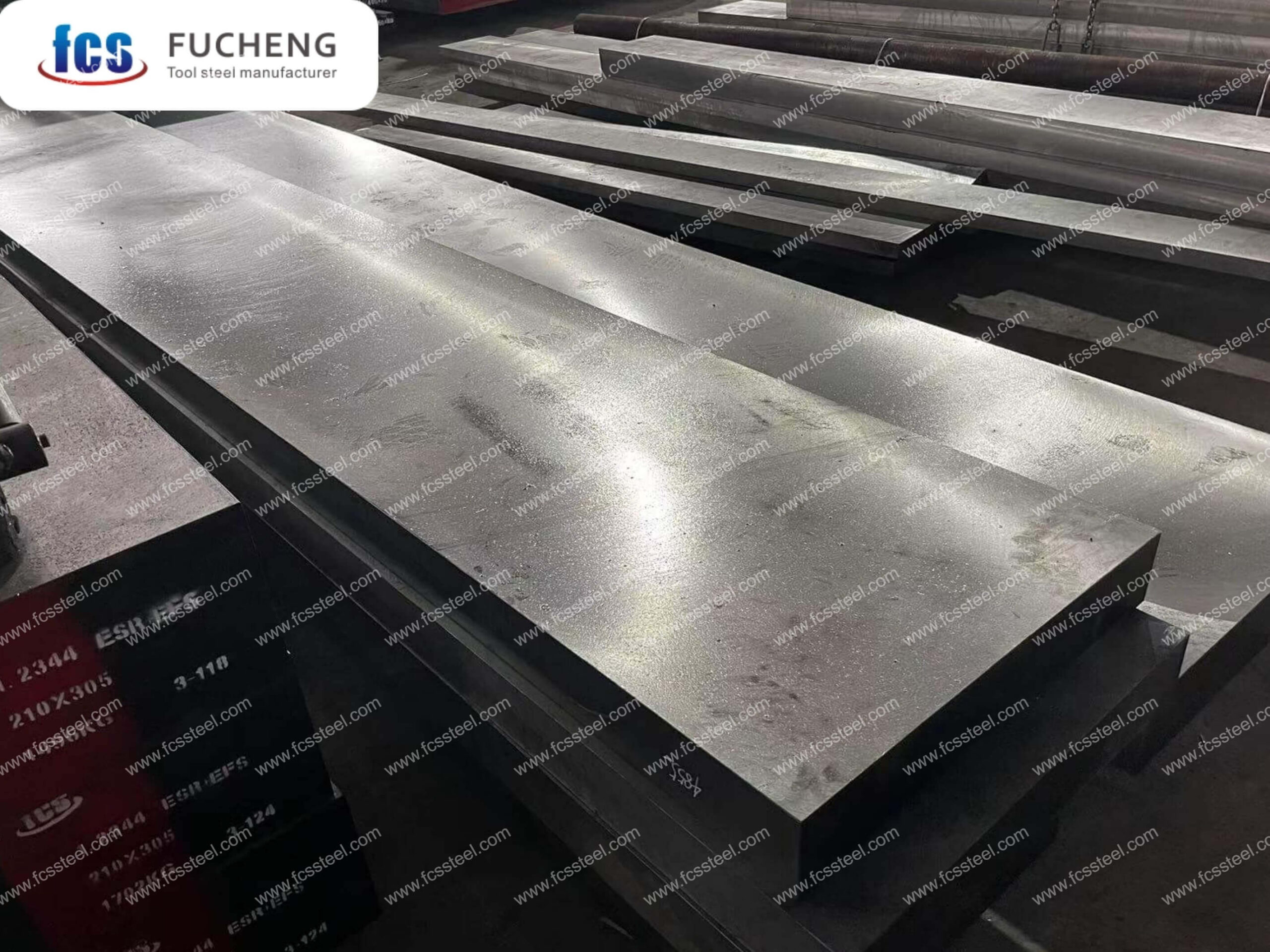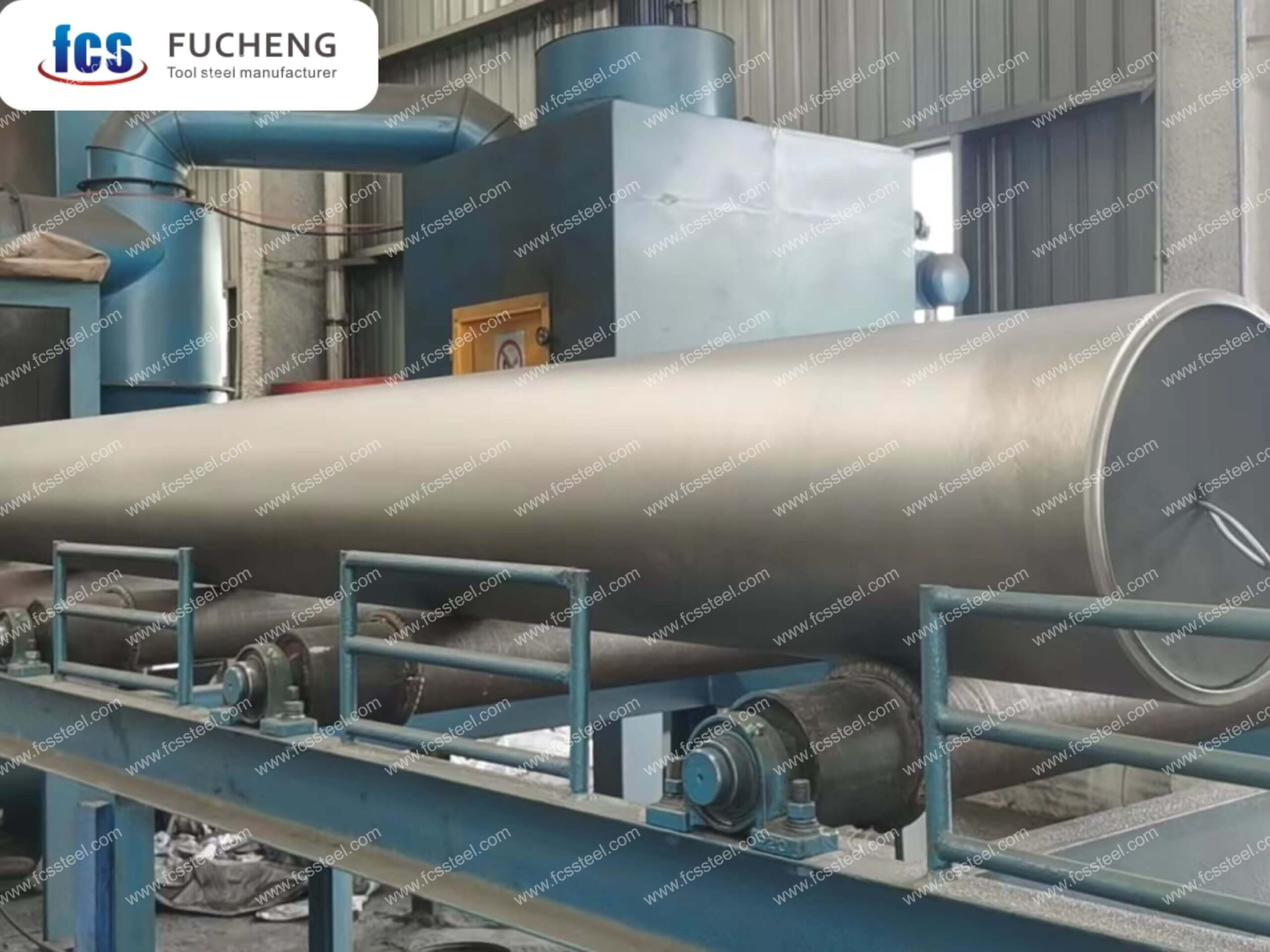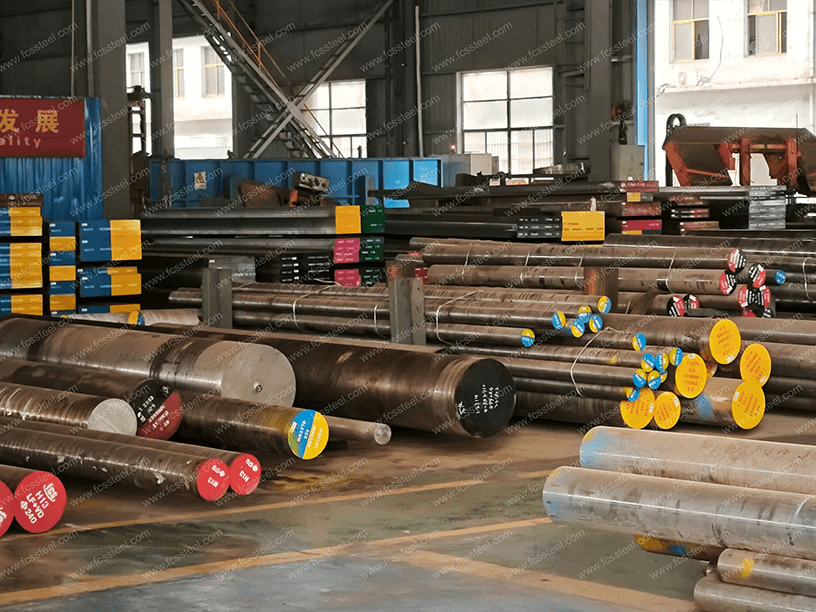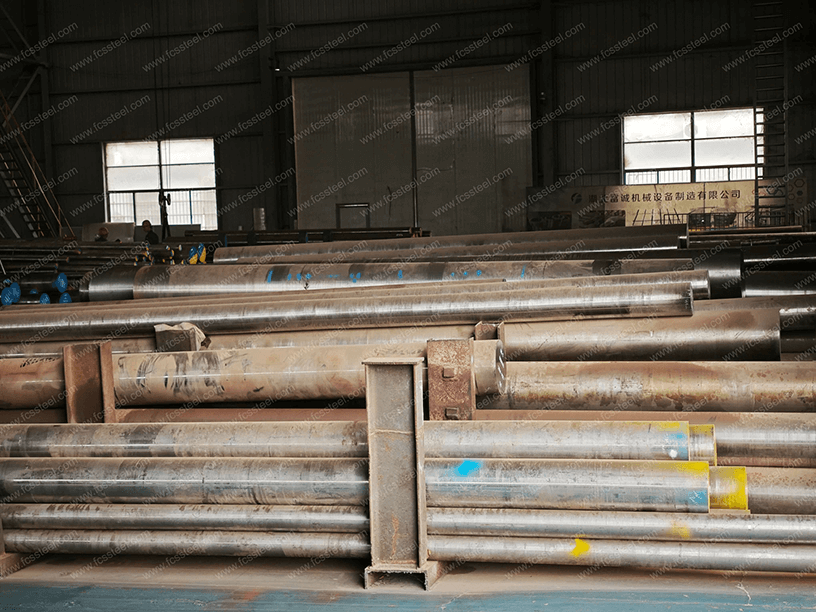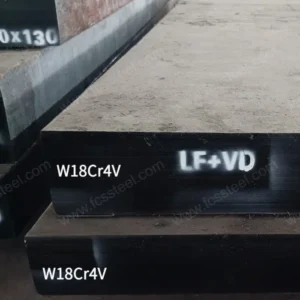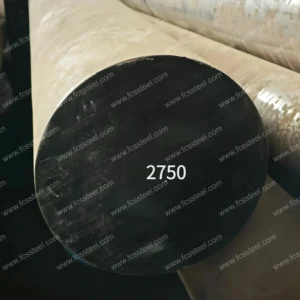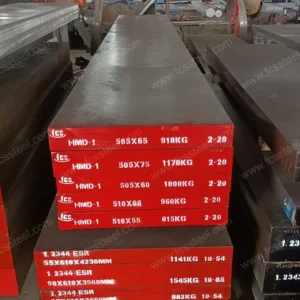SKH51 Tool Steel
In today’s high-speed precision machining industry, traditional tool steels tend to lose their hardness at high temperatures, resulting in shorter tool life, reduced machining accuracy and increased production costs. This challenge particularly affects productivity in the automotive, aerospace and precision machinery manufacturing sectors.
SKH51 high speed tool steel supplied by FCS Factory addresses this technical challenge through optimised chemical composition and advanced heat treatment processes.The tungsten and molybdenum elements in SKH51 steel provide excellent red-hardness, while moderate amounts of vanadium and chromium ensure excellent wear resistance and dimensional stability.
Moulds and cutting tools made from FCS Factory’s SKH51 tool steel maintain excellent performance at high temperatures and have a working life that is more than 200% longer than that of ordinary tool steels, significantly reducing the frequency of mould replacements and maintenance costs for our customers, while improving the consistency and accuracy of the end product.
SKH51 Tool Steel Product Introduction

SKH51 tool steel is a molybdenum-based high-speed tool steel that meets the Japanese Industrial Standard (JIS G4403) and is a high-performance cutting tool material. The corresponding American standard ASTM is M2, and the corresponding German standard DIN/W-Nr is S6-5-2/1.3343. Its chemical composition is based on high carbon, molybdenum, tungsten and vanadium as the core, supplemented by chromium and other elements, with strict control of phosphorus and sulfur impurities. It has excellent red hardness (the hardness remains above HRC60 at 600℃) and excellent high-temperature wear resistance.
Through high-temperature quenching (1190-1230°C oil cooling or salt bath) and multiple tempering (540-570°C tempering 2-3 times), SKH51 can be optimised to a hardness of ≥63 HRC, forming a tempered martensite-based organisation, with a flexural strength of ≥3,500 MPa and an impact toughness of ≥25 J/cm². The nature of the design relies on molybdenum-tungsten composite carbides to enhance high-temperature performance, while chromium improves hardenability and vanadium refines grain size and enhances wear resistance, but attention should be paid to the effect of the uniformity of carbide distribution on performance.
SKH51 Tool Steel Types and Options

The table below shows the size range, surface condition and tolerance details for SKH51 Mould Steel:

SKH51 Tool Steel Customized Options
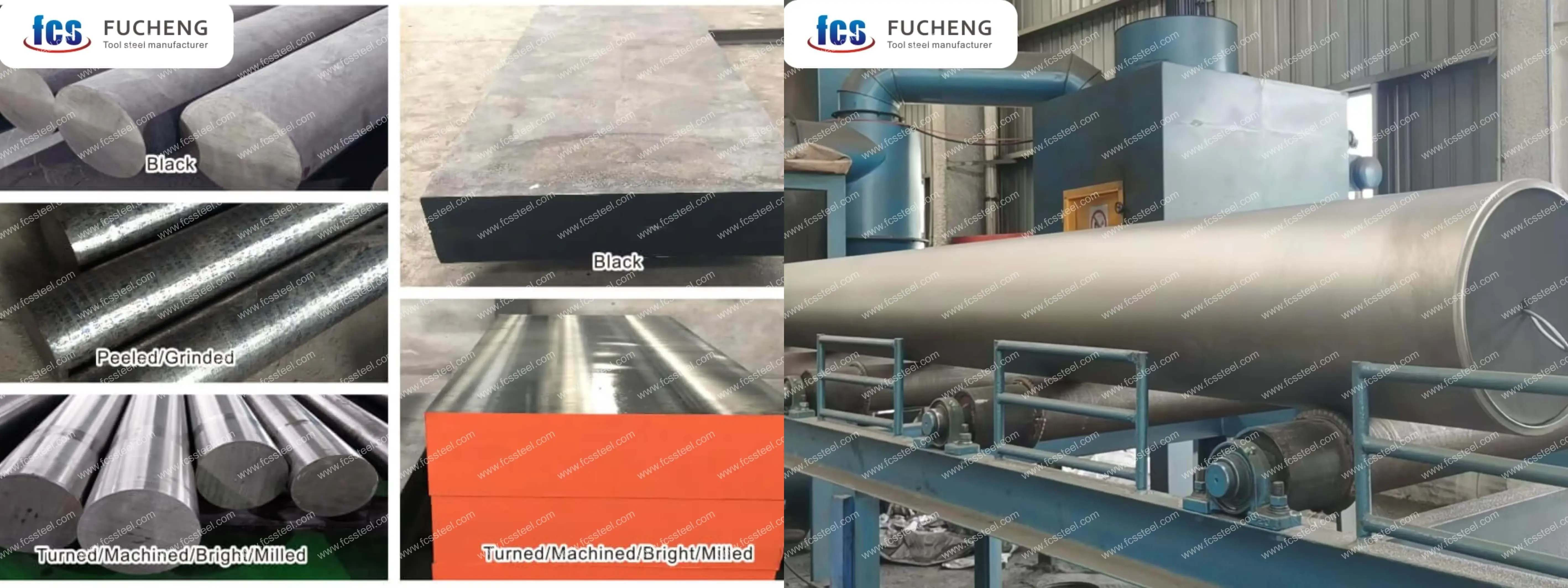
- Customized chemical composition: GB, DIN, ASTM, JIS and other standard grades can be produced. Chemical composition can be customized individually.
- Customized specifications: round steel (diameter), plate (thickness, width) can be customized production.
- Specialized packaging for long term storage or extreme transportation conditions: includes spraying black paint all around, wrapping plastic film, spraying anti-rust oil, and shipping in wooden crates.
- Customized production based on samples or technical agreements.
- SKH51 Tool Steel Electroslag Remelting (ESR): premium option with higher purity and isotropic properties for critical applications.
SKH51Tool Steel Chemical Composition
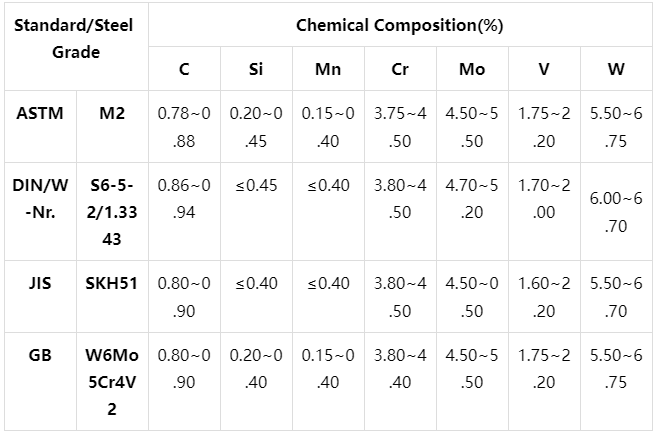
SKH51 Tool Steel Heat Treatment Process
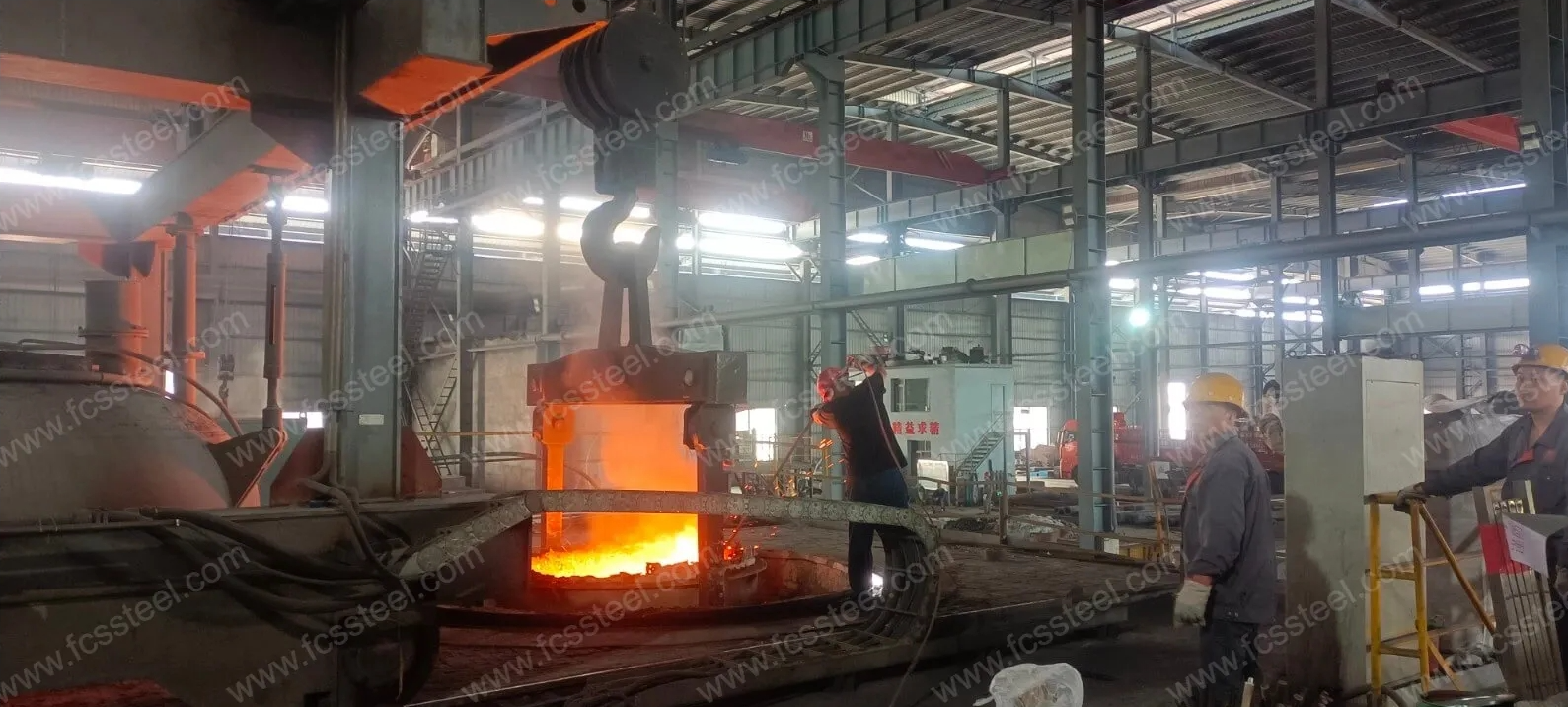
1.Annealing
Purpose: to eliminate internal stresses generated during forging or rolling, reduce hardness, improve cutting performance, and prepare for subsequent processing and heat treatment.
Process parameters:
Heating temperature: 800-850 ℃, holding time 2-4 hours, with the furnace cooling to below 500 ℃, and then air-cooled.
2.Quenching
Purpose: to make the tool steel to obtain martensitic organization, improve hardness and wear resistance.
Process parameters:
Heating temperature: 1000-1050 ℃ (commonly used 1020-1040 ℃), holding time according to the size of the workpiece to determine, generally 30-60 minutes.
Cooling: oil cooling or air cooling (for small size or simple shape of the workpiece), large workpieces can be graded quenching (in the 260-300 ℃ salt bath cooling for a period of time and then air-cooled), in order to reduce the quenching stress, to prevent deformation and cracking.
3.Tempering
Purpose: to eliminate quenching stress, adjust the hardness and toughness, stable organization and size.
Process parameters:
low-temperature tempering: 150-250 ℃, insulation 2-3 hours, air-cooled, tempered hardness of 58-62HRC, for molds requiring high hardness and wear resistance.
Medium temperature tempering: 300-500 ℃, insulation 2-3 hours, air-cooled, tempered hardness of 50-58HRC, can improve the toughness, suitable for molds subject to impact load.
High-temperature tempering: 500 ℃ or more, insulation 2-3 hours, air-cooled, tempered hardness 45-50HRC, mainly for the need for higher toughness of the occasion.
4.Precautions
Heating process should control the rate of heating to avoid too rapid a rise in temperature leading to workpiece surface oxidation and decarburization. Protective atmosphere heating can be used or placed in the furnace charcoal and other anti-decarburization agent.
When quenching and cooling, choose the appropriate cooling medium and cooling method according to the shape and size of the workpiece to ensure the quenching effect while reducing the risk of deformation and cracking.
Tempering must be sufficient to ensure the elimination of internal stresses to avoid mold failure due to stress release during use. For large molds or workpieces with complex shapes, multiple tempering can be used.
SKH51 Tool Steel Quality Inspection
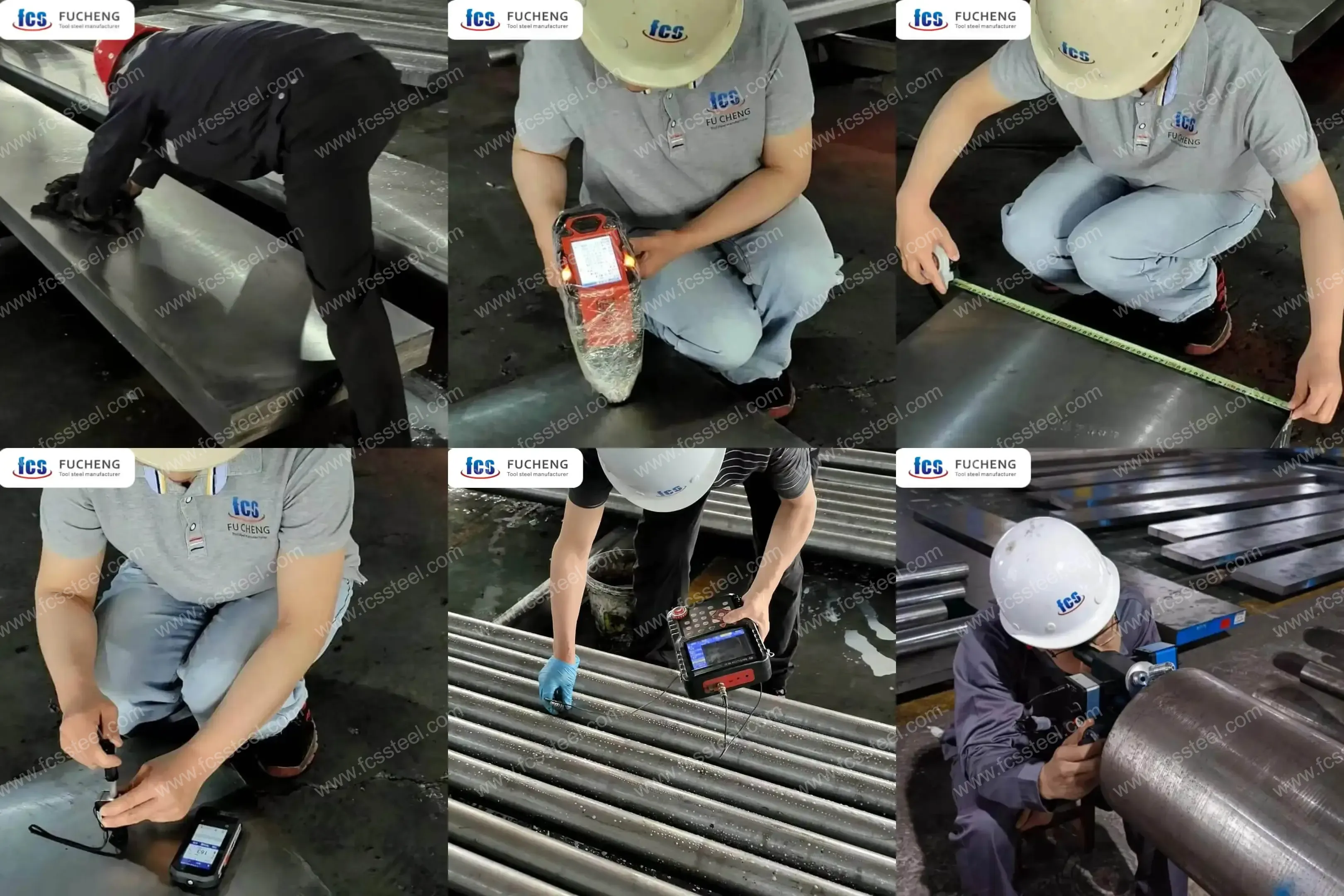
1.Surface Condition Inspection
FCS factory has a very strict quality inspection team, we will carefully check the surface condition of each piece of tool steel to ensure that the steel surface is free from cracks, folds, knots, oxidized skin, pitting, scratches and other defects.
2.Chemical Composition Testing
To verify whether the content of alloying elements meets the standard requirements and to safeguard the basis of the mechanical properties of the material. We will let the staff use full-spectrum direct reading spectrometer to analyze multiple elements at the same time. Sampling needs to remove the surface oxidation layer, using a block specimen to stimulate the test.
3.Dimension and Tolerance Inspection
FCS factory will use professional measuring tools to inspect the dimensions and tolerances of the steel to ensure compliance with the customer's contract requirements. Corresponding gauges will be selected according to the dimensional accuracy requirements, including tape measure, high-precision vernier calipers (0.02mm), micrometers (0.001mm), and special inspection gauges. Inspection items cover: diameter, thickness, width, length, hole diameter, chamfering dimensions, etc., to ensure that the tolerances and dimensions meet the contract requirements.
4.Hardness test
Our FCS factory will use professional hardness tester to test the hardness of steel to ensure that it meets the customer's contract requirements.
5.Ultrasonic Testing
Ultrasonic Testing Standard (UT Test Standard) is: Sep 1921-84 Class3 D/d,E/e.
FCS factory uses ultrasonic testing equipment to detect macro defects inside the material (such as cracks, shrinkage holes, inclusions, white spots, etc.), and every piece of round steel and plate will be examined by a second flaw detection test before shipment to ensure that the quality is qualified before shipment.
6.Microstructure Inspection
(1) Metallographic Analysis
FCS factory will use metallographic analysis instrument to detect the microstructure state after heat treatment, including carbide distribution, martensite morphology, residual austenite content, etc.
(2) Grain size rating
FCS factory will use the comparative method to determine the austenite grain size by comparing the microstructure of the specimen with the standard rating chart, to ensure that it meets the customer's requirements.
SKH51 Tool Steel Technical Specifications
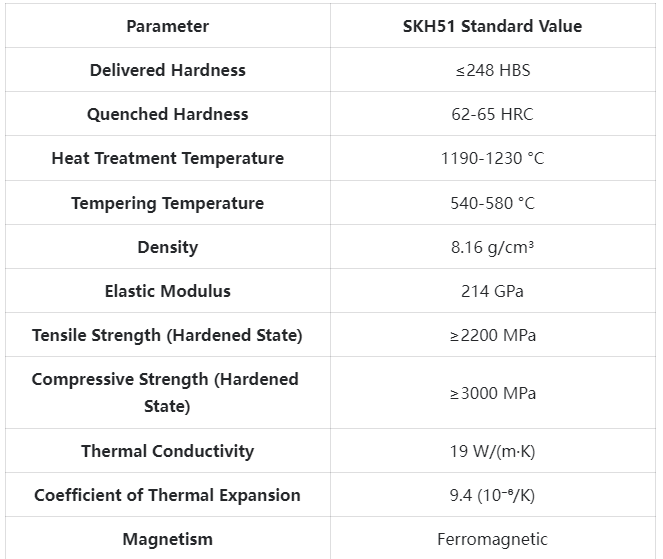
SKH51 Tool Steel Product Applications

- Automotive industry: high precision cold blanking and progressive dies, high speed blanking dies, hot forging die liners, demanding thread forming tools, precision machining tools for engine components.
- Aerospace industry: high-performance titanium alloy cutting tools, special tools for composite material processing, high-precision drilling dies and guide bushings, aerospace fastener forming dies, special alloy processing tools.
- Electrical and electronic industry: precision blanking dies, micro-connector forming dies, precision electronic component forming tools, LED heat sink extrusion moulds, IC leadframe punching dies.
- Medical device industry: precision surgical instrument manufacturing tools, medical implant processing tools, medical device precision parts moulds, injection needle forming tools, orthopaedic instrument forming moulds.
SKH51 Tool Steel Competitive Advantage Comparison
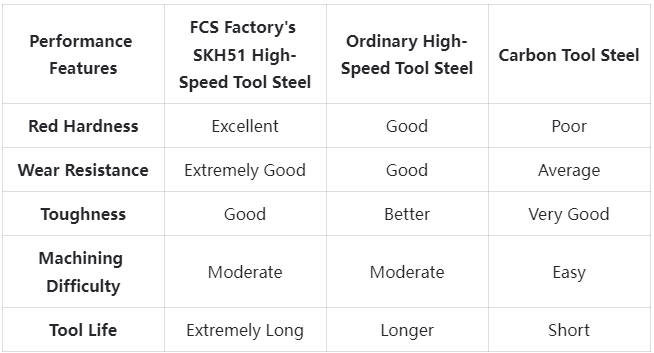
SKH51 Tool Steel Customer Success Stories
Skip the middleman link, source factory purchasing, reduce purchasing cost and improve market competitiveness.
SKH51 Tool Steel Pricing Structure Information
Serving the world, whole cabinet sales, factory wholesale price.
SKH51 Tool Steel Frequently Asked Questions
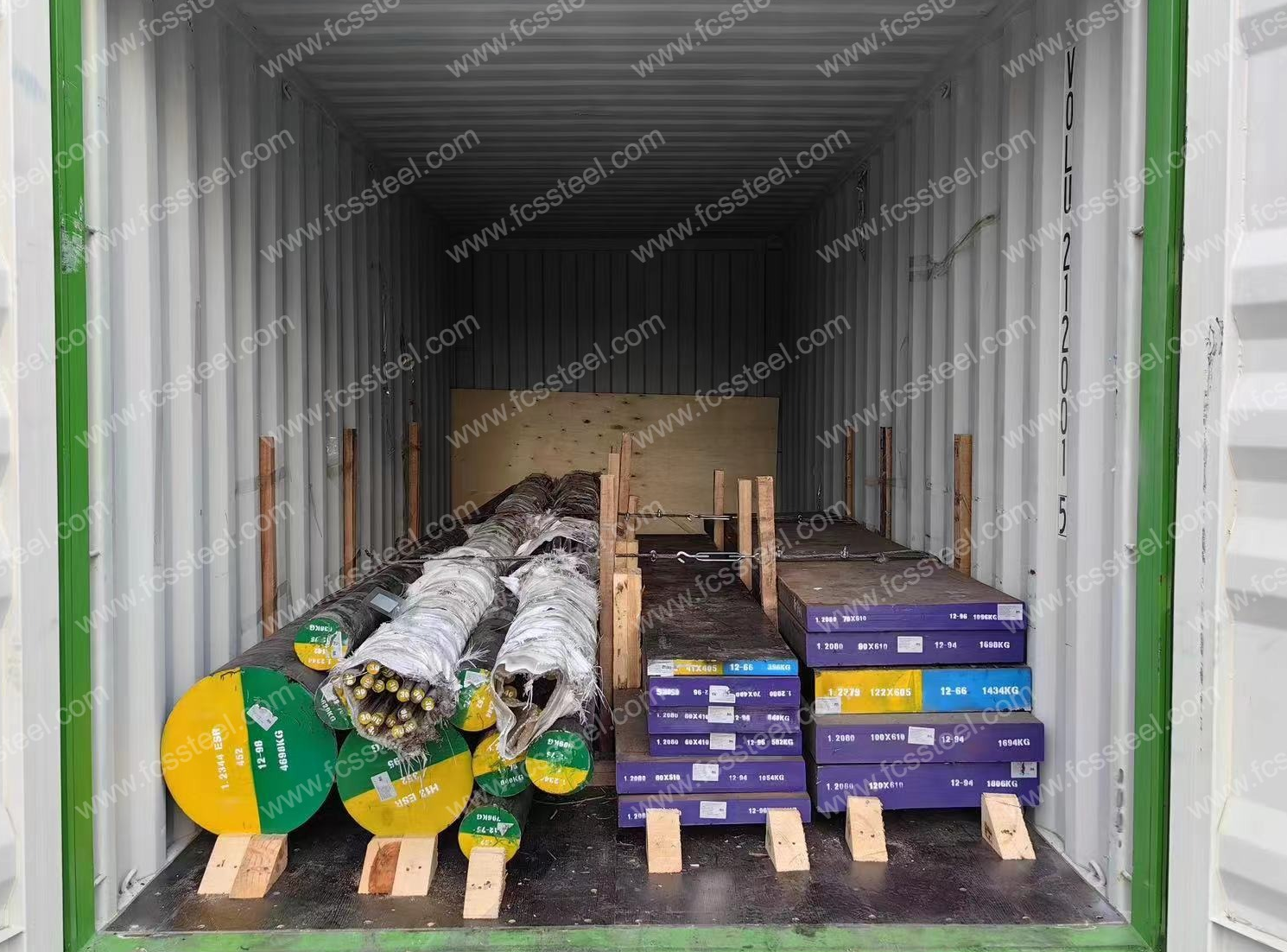
Q:What is the difference between SKH51 and M2 tool steel?
A:SKH51 is a Japanese standard designation, essentially the same as the U.S. AISI M2 high-speed tool steel, the chemical composition of the two are basically the same, both belong to the tungsten-molybdenum type high-speed steel. SKH51 is a tungsten-molybdenum type high-speed tool steel, which is precisely controlled to provide more uniform properties and better heat treatment stability.Q:What are the advantages of SKH51 over other high speed tool steels?
A:SKH51 (M2) offers a good balance of properties and cost-effectiveness compared to other common high-speed tool steels. It has better toughness than M1, better machinability than M7, and lower cost but still good high temperature performance than cobalt HSS such as M42. Our SKH51 further improves the performance consistency and heat treatment stability of standard SKH51 by optimising the melting and heat treatment process.
Q:What are the best storage conditions for SKH51?
A:SKH51 should be stored in a dry environment, avoiding direct contact with floors or walls to prevent moisture condensation. Large materials should be properly supported to prevent deformation. It is recommended that the surface of materials stored for a long period of time be coated with anti-rust oil or packaged in anti-rust paper. Different batches of materials should be clearly labelled and first-in-first-out management should be implemented. Temporary storage in open environment should not exceed 24 hours.Q:How is SKH51 compared to other types of tool steel such as D2 or H13?
A:The choice depends on the specific application requirements. Compared to cold work tool steel D2 (SKD11), SKH51 has better red hardness and wear resistance, making it particularly suitable for high speed or high temperature working environments, but at a slightly higher cost. Compared to hot work mould steel H13 (SKD61), SKH51 has better wear resistance but lower toughness, making it more suitable for precision cold work moulds rather than large hot work moulds.FCS Factory can provide a detailed material selection consultancy service, recommending the most suitable material for the customer's specific working conditions and life expectancy requirements.
Additional information
| Weight | 45 kg |
|---|---|
| Dimensions | 165 × 60 × 25 cm |

